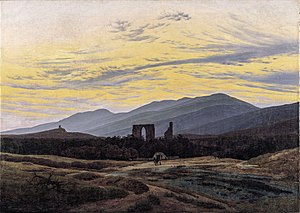
Ruins of Eldena Abbey in the Riesengebirge or Ruins in the Riesengebirge is an 1830-1834 oil on canvas painting by Caspar David Friedrich, now in the Pommersches Landesmuseum in Greifswald. It shows the ruins of the Eldena Abbey in the Riesengebirge mountains. [1]